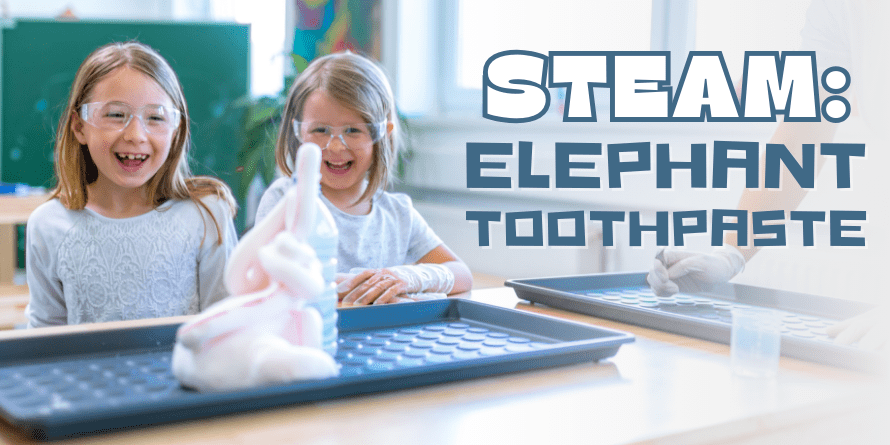
Create a giant foaming reaction and use science to wow your friends with this classic activity. With just a few ingredients you can make something that looks like foamy toothpaste being squeezed from a tube—but so big that it looks just right for an elephant!
Materials
- Yeast
- Measuring spoons
- Dish soap
- Cup with warm water
- Empty bottle (2-liter, water bottle)
- 3% hydrogen peroxide
- Large tray to catch the foam
- Safety glasses
- Note: although the product of this activity resembles toothpaste, it is not toothpaste, so do not attempt to use it!
Method
- Gather your materials.
- Put on your safety glasses.
- Place 2 tablespoons of yeast into 3 oz of warm water.
- Mix yeast and warm water, let stand until it gets frothy (about 3 minutes).
- Pour 4 ounces of hydrogen peroxide into an empty bottle.
- Squirt 1 tablespoon of dish soap into the bottle with the hydrogen peroxide.
- Pour your yeast mixture into the bottle.
- Observe what happens!
Why Did This Happen?
"Elephant toothpaste" is created when a chemical reaction takes place and releases one oxygen atom from the hydrogen peroxide (H2O2). Hydrogen peroxide breaks down into water (H20) and oxygen (O2) naturally over time, but the yeast causes this to occur faster.
The yeast has an enzyme in it called catalase. Catalase is a catalyst, something that increases the speed of the reaction. The catalyst is what causes the oxygen to be released quickly to create our "elephant toothpaste". So why did we add soap? We wanted to capture all of the released oxygen (gas) from the chemical reaction!
Extend Your Learning
- Would the experiment still work if you added more yeast?
- What happens if you don’t add the soap?
- Does the shape or size of the bottle change how the elephant toothpaste flows?
This experiment was adapted from the Michigan Learning Channel.



Add a comment to: STEAM: Elephant Toothpaste